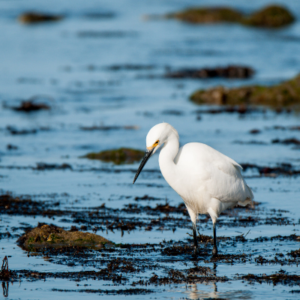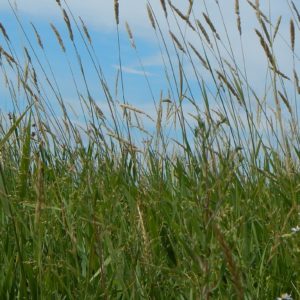Canada’s Birds In Panama
 Western Sandpipers breed across western Canada’s Arctic and have for millennia migrated along flyways from Alaska down through the US, then along the coast of northwestern Mexico and on to Panama.
Western Sandpipers breed across western Canada’s Arctic and have for millennia migrated along flyways from Alaska down through the US, then along the coast of northwestern Mexico and on to Panama.
Panama Bay, on the southern Pacific side of Panama, lies at the heart of a network of vital wetland habitats upon which depend millions of Western Sandpipers during our boreal winter months. Remove one of these sites and you potentially risk the entire population.
Efforts over the last decade have brought international attention to the site and organizations like Panama Audubon Society (BirdLife in Panama) have been working to redress the complex issues affecting the Bay, which lies in the shadows of Panama City’s fast-growing skyscrapers, giant structures that are now a wall-to-wall feature of the shoreline.
Nature Canada has accompanied Panama Audubon Society on this journey and secured funds through the Canadian International Development Agency to work with local communities living on the eastern edge of the bay to better engage in local conservation action. While the communities understood the benefits of the mangrove forests, it was clear that the major source of environmental degradation was not the local communities but uncontrolled urban sprawl – both outwards and upwards!
Earlier this month, I participated in a meeting of like-minded organizations seeking to support the conservation of these critical staging sites for shorebirds throughout the Americas. This initiative, called the Western Hemisphere Shorebird Reserve Network, was founded in 1985 to bring together knowledge and resources for securing a network of sites upon which depend the lives of many shorebirds (and in some cases, whole populations of an individual species). Nature Canada joined representatives from 11 nations with an interest to share in the conservation of these highly mobile species. In recognition of our commitment to shorebird conservation combined with our collaboration with other BirdLife partners in Latin America and the Caribbean, I have been invited to chair this international network.
Our meeting in Panama helped draw attention to the plight of Panama Bay to local decision makers. As Nature Canada becomes more involved in site-based conservation, it is moving to adopt a range-wide approach to its conservation efforts, recognizing that we must, where possible, engage in the conservation of our breeding birds beyond our borders to include actions that span the entire flyways of our shared birds. It is our plan to do this through a very active and engaged network of BirdLife International partners.
Photo Credits – Diego Luna (Top Photo – Panama Bay, Bottom Photo – Dowitchers)



